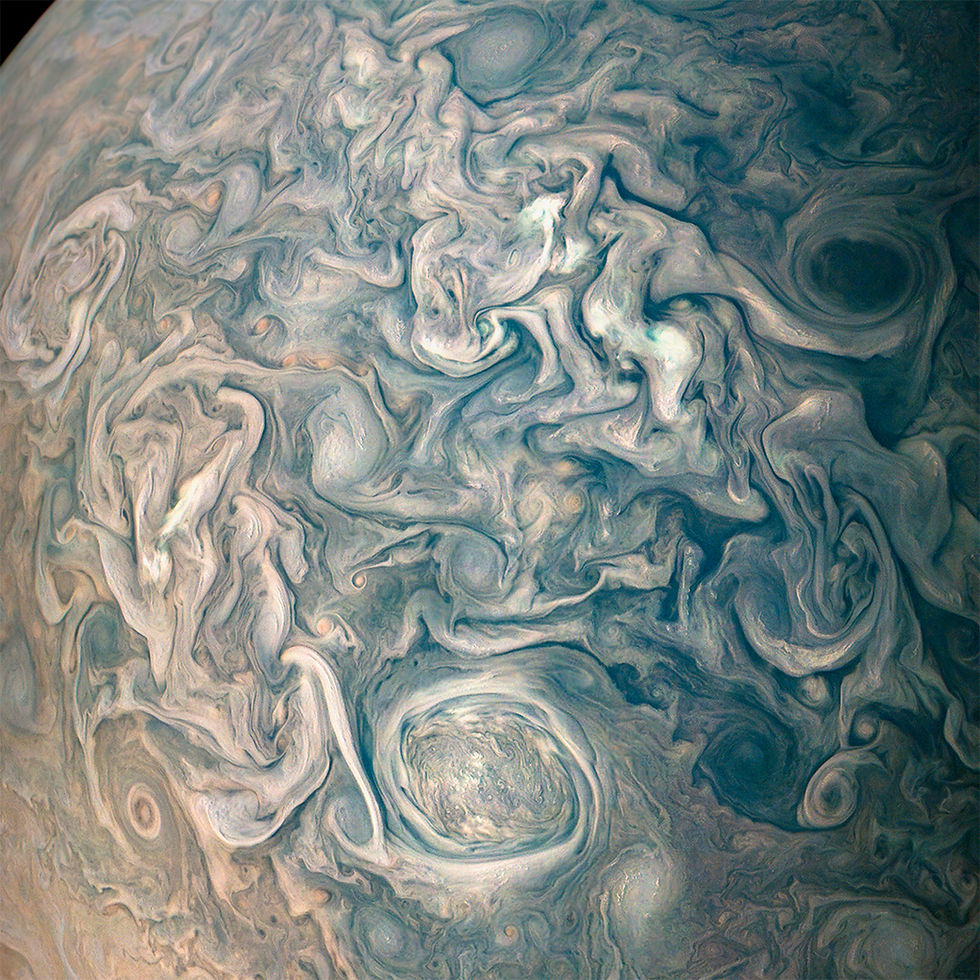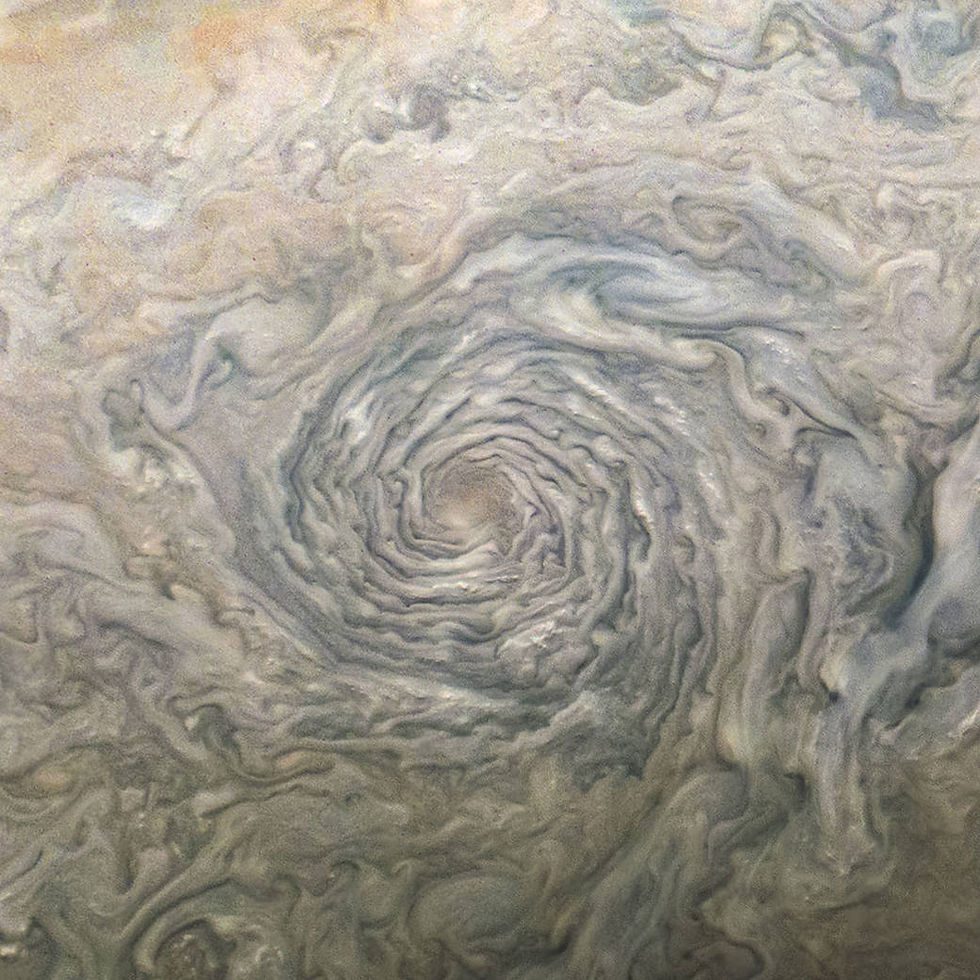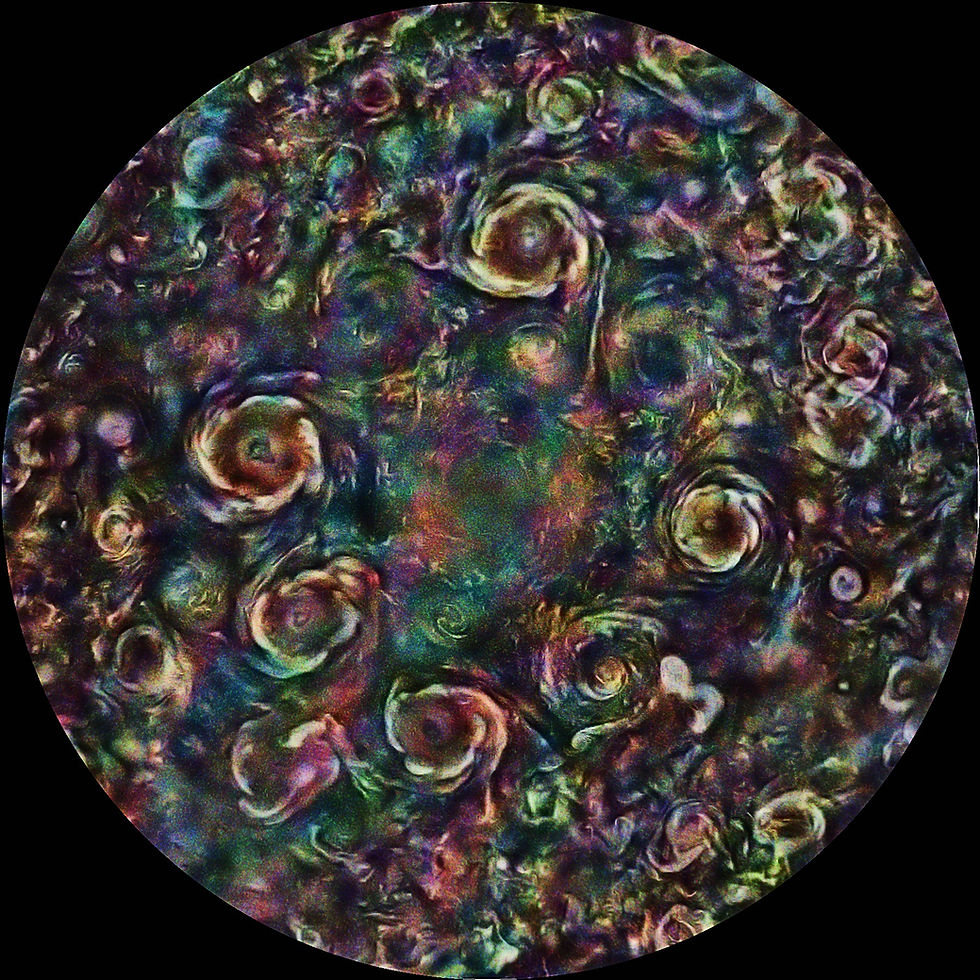Masterpieces of motion
- James Tyler
- Aug 3, 2023
- 3 min read
I’m going to go out on a limb here – actually, I don’t think I’m going out very far on this particular limb. But I’m going out to say that many of the recently processed images taken by NASA’s Juno spacecraft of the planet Jupiter’s tumultuous atmosphere are works of art.

It’s hard not to have Vincent van Gogh’s “The Starry Night” masterpiece come to mind when seeing the turbulent photos from Juno’s close flybys of the giant gas planet.
In its prime mission’s polar orbit, Juno captured dramatic images of storm vortices, giant storms stretching hundreds of miles across.
The cyclones can reach about 30 miles deep, giving a whole new meaning to “twister.”
It was back in 2011 when Juno was launched, reaching Jupiter about five years later on July 4, 2016. The 11.5-foot-high space probe was inserted into an elliptical orbit over the gas giant’s two poles, at times skimming along at just a few thousand miles above the cloud tops.

That original orbit took 53 days for Juno to orbit the planet. After all, the fifth planet from the Sun is the largest in the solar system with a diameter of 88,846 miles at its equator.
Juno was supposed to call it quits in 2021.
But it’s still going, sending back a wealth of information and stunning images. According to NASA, during the 35 orbits of Juno’s prime mission, the spacecraft collected more than three terabits of science data.
There’s a lot more science involved with the Juno mission than just sending back pretty pictures of the gas planet. Operated by NASA’s Jet Propulsion Laboratory, Juno has been studying Jupiter’s gravitational and magnetic fields, aurora and the swirling clouds of its atmosphere and now is expanding to the full Jovian system.

According to NASA, Juno’s mission is “to probe beneath the planet’s dense clouds and answer questions about the origin and evolution of Jupiter, our solar system, and giant planets in general across the cosmos.” Easy-peasy I assume.
Those hypnotic, swirling images from Juno don’t just happen, though.
NASA created a citizen science project called Jovian Vortex Hunter, and volunteers from the public are encouraged “to spot and help categorize vortices and other atmospheric phenomena visible in JunoCam photos of Jupiter.”
These citizen scientists create the enhanced color and contrast view of vortices using raw JunoCam image data.

In the ancient Roman religion, Jupiter (aka Jove) was King of the Gods and also God of the sky and thunder. His wife was the goddess Juno, who was a daughter of Saturn, which made her Jupiter’s sister (ewww!).
Jupiter wasn’t always the most faithful of spouses, and when he wanted to go a-roving he would cover the world in clouds.
But Juno was able to peer through the clouds and get wise to Jupiter’s philanderings and much trouble ensued.
So it seems pretty on target to name a spacecraft that searches through the clouds of Jupiter after the Roman Queen of the Gods, who was famous for just such a wonderous feat.
The spacecraft, however, uses a microwave radiometer, six antennas that measure microwaves coming from the planet, penetrating to about 340 miles.
Since Juno didn’t hang up its spurs in 2021, NASA has extended the mission until 2025 so that the spacecraft will continue to explore Jupiter, its rings and moons and make multiple encounters with three of those moons: Ganymede, Europa and Io.

The beautiful images of Jupiter’s vortices are just a glimpse of the wealth of scientific imagery, data and information sent back across the roughly half-a-billion miles of space separating the gas giant and Earth.
You can see a trove of images at Juno Image Gallery | NASA.
With some more years of life left for Juno, what other amazing photos are still to come to awe us?
Sometimes science can be more artistic than you might think.



Comentários